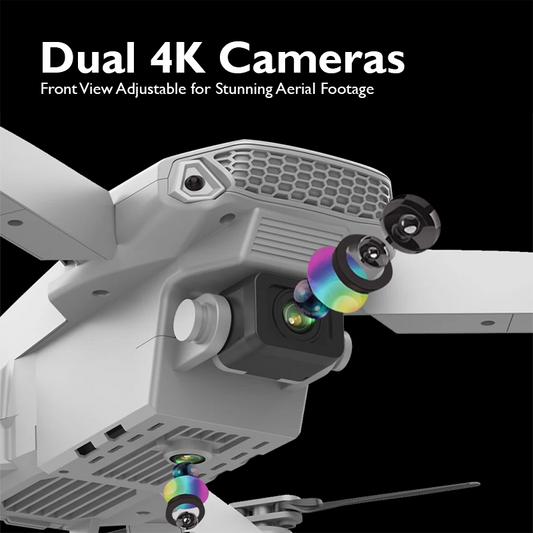A Guide to Drones in Butterfly Migration Studies

In recent years, the marriage of technology and science has birthed innovative approaches to studying wildlife and their behaviours. Drones, also known as Unmanned Aerial Vehicles (UAVs), have become invaluable tools for researchers delving into various fields, including ecology and animal migration studies. In this guide, we will explore the role of drones in the fascinating realm of butterfly migration studies, shedding light on how these unmanned marvels are transforming our understanding of one of nature's most enchanting phenomena.
Understanding Butterfly Migration

Butterfly migration is a captivating natural spectacle that has intrigued scientists and nature enthusiasts for centuries. Unlike birds, butterflies are delicate creatures with intricate life cycles, and their migratory patterns have long been a subject of scientific curiosity. The migration of butterflies involves the movement of these winged wonders across vast distances, often spanning thousands of miles, to reach their breeding or overwintering grounds.
Traditionally, studying butterfly migration posed numerous challenges due to the limitations of human researchers and conventional research methods. However, the advent of drone technology has opened up new possibilities, offering a bird's-eye view of these ethereal journeys.
The Role of Drones in Butterfly Migration Studies

1.Aerial Surveys and Monitoring
Drones equipped with high-resolution cameras provide researchers with an unprecedented aerial perspective, enabling them to conduct comprehensive surveys and monitor butterfly populations across large geographical areas. This capability is particularly advantageous in tracking migration patterns and identifying critical waypoints in a butterfly's journey.
By capturing high-quality images and videos, researchers can observe the density and behaviour of migrating butterflies, gaining insights that were previously unattainable. This aerial surveillance helps in understanding the factors influencing butterfly migration, such as climate conditions, habitat changes, and the availability of resources.
2.Tracking Individual Butterflies
Miniaturised tracking devices attached to butterflies have revolutionised the ability to follow individual specimens during their migration. Drones play a pivotal role in tracking these tagged butterflies from the air, providing real-time data on their movement patterns and behaviours.
The integration of GPS technology with drones allows researchers to create precise maps of butterfly migration routes. This not only enhances our understanding of their navigation strategies but also helps identify potential threats and conservation priorities along their migratory corridors.
3.Habitat Assessment and Conservation
Drones play a crucial role in assessing butterfly habitats and monitoring changes over time. Through remote sensing technologies, such as infrared and multispectral imaging, researchers can analyse the health of vegetation, identify breeding sites, and evaluate the impact of environmental factors on butterfly populations.
This data is invaluable for designing effective conservation strategies, enabling scientists to pinpoint areas that require protection and restoration. By combining drone technology with traditional field studies, researchers can create a holistic picture of the ecological factors influencing butterfly migration and implement targeted conservation efforts.
4.Data Collection for Scientific Research
In addition to visual observations, drones are equipped with various sensors that can collect data on environmental variables such as temperature, humidity, and air quality. This information is crucial for understanding the intricate relationships between butterflies and their surroundings during migration.
The ability to collect real-time environmental data allows researchers to correlate butterfly behaviours with specific conditions. This knowledge contributes to a deeper understanding of the factors influencing migration, helping scientists predict and mitigate potential threats to butterfly populations.
Best Practices for Drone-Based Butterfly Migration Studies

1.Choose the Right Drone and Equipment
Selecting the appropriate drone for butterfly migration studies is crucial. Consider factors such as flight time, payload capacity, and camera capabilities. High-resolution cameras with zoom and thermal imaging capabilities can enhance the quality and depth of data collected during surveys.
2.Plan Flights with Precision
Before deploying drones for butterfly migration studies, meticulous flight planning is essential. Identify key study areas, waypoints, and migration routes based on previous research and observations. Pay attention to weather conditions and ensure compliance with local regulations to minimise any potential disturbance to the butterflies.
3.Collaborate with Experts
Effective butterfly migration studies often require collaboration between drone operators and butterfly experts. Engage with entomologists, ecologists, and conservationists to ensure a multidisciplinary approach. Their expertise can guide the research process, from planning and data collection to the interpretation of results.
4.Consider Ethical and Environmental Impacts
While drones offer unparalleled access to remote or challenging terrains, researchers must prioritise ethical considerations and minimise environmental impact. Adhere to ethical guidelines for wildlife research, obtain necessary permits, and employ non-intrusive methodologies to study butterflies without causing harm or disruption.
The integration of drones into butterfly migration studies has ushered in a new era of scientific exploration. By harnessing the power of unmanned aerial vehicles, researchers can unravel the mysteries of butterfly migration with unprecedented precision and depth. From aerial surveys and tracking individual butterflies to assessing habitats and collecting valuable environmental data, drones have become indispensable tools in advancing our understanding of this enchanting natural phenomenon.
As technology continues to evolve, the synergy between drones and butterfly migration studies will likely yield even more groundbreaking insights, fostering conservation efforts and contributing to the broader field of ecology. Embracing these advancements, researchers and conservationists can work together to protect and preserve the delicate balance of nature's intricate tapestry, ensuring that the breathtaking spectacle of butterfly migration endures for generations to come.
Explore a variety of drones at our online drone store.Happy Flying!











